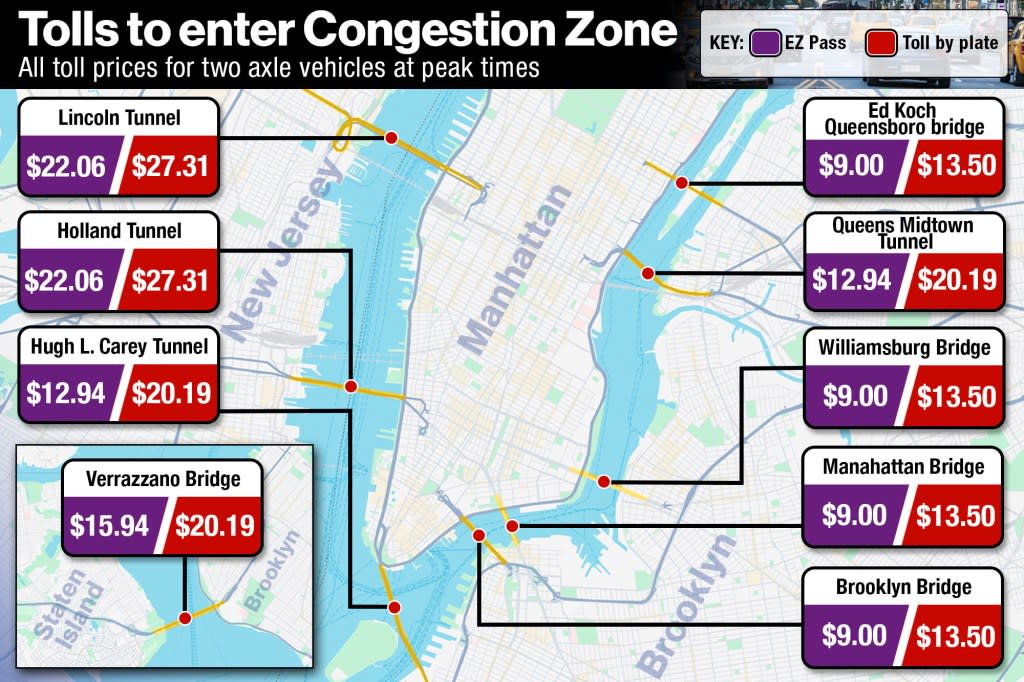New York City’s nascent congestion pricing program—a policy breakthrough decades in the making—is under threat not from practical challenges, but from political headwinds. Barely five weeks into implementation, federal opposition is attempting to derail an initiative demonstrably poised to revolutionize urban mobility. This resistance ignores the program’s rigorous planning, early successes, and profound vision: to redefine urban space for the collective good, moving beyond mere traffic management to a fundamental reimagining of city life.
The journey to congestion pricing, officially launched as the Central Business District Tolling Program on January 5, 2025, was a marathon of policy-making. From its initial proposal in 2007, through incorporation into the 2019 New York State budget, and despite federal approval in June 2023, the program faced relentless delays. A politically motivated postponement by Governor Hochul announced in mid-2024, just days before its initial launch date, underscored the deep-seated political sensitivities surrounding the initiative. Following the 2024 presidential election, a revised plan with a $9 base toll (down from $15) swiftly gained final approvals, allowing New York City to become the first U.S. city to implement congestion pricing on January 5th, 2025, just days before President Trump began his second term.

This toll, applied to vehicles entering Manhattan below 60th Street and calibrated by vehicle type and time, is already yielding compelling results. Data from the program’s first weeks reveal dramatic improvements: travel times on key inbound river crossings are down 30-40%. The Holland Tunnel, a notorious bottleneck, shows a remarkable 48% reduction in peak morning crossing times. Even Manhattan’s notoriously slow bus routes are seeing gains, with the M50 improving by 5% during rush hour. These aren’t marginal tweaks; the MTA reports over 26,000 fewer vehicles in the congestion zone daily, translating to a 7.5% traffic decrease in the central business district in just the first week – a powerful indication of the program’s immediate impact.
These initial successes are not anomalies; they mirror the well-documented outcomes in global cities pioneering congestion pricing. London, Stockholm, and Singapore have all demonstrated the transformative potential of this policy. In London, traffic plummeted by 15% in the first year, and bus delays decreased by a third. Stockholm witnessed a 14% drop in emissions and a stunning 50% reduction in childhood asthma-related hospital visits. Singapore’s system boosted traffic speeds by 22%. These are not just traffic statistics; they are indicators of improved public health, enhanced economic efficiency, and a more livable urban environment.
Yet, despite this compelling evidence and early local success, political opposition is mounting. A recent threat to federal transportation funding—$36 million vital for New York’s aging infrastructure—poses a significant challenge. While critics raise concerns about economic impacts and equity, these are addressed within the program’s design. Discounts for low-income residents and dedicated revenue streams for underserved communities are built-in mechanisms to ensure fairness and promote equitable transit improvements. Moreover, the experience of London and Stockholm demonstrates that businesses in congestion zones not only survive but can thrive in a more accessible and less congested environment. Concerns about parking spillover have also been effectively managed through strategic infrastructure investments in these cities.
The opposition’s conflation of congestion pricing with unrelated issues—like e-bike safety—is a transparent attempt to distract from the program’s core benefits. These are distinct challenges requiring separate solutions, not reasons to abandon a proven strategy for tackling congestion and pollution.
Congestion pricing is fundamentally about prioritizing people over cars in urban space. The anticipated $1 billion in annual revenue isn’t just about balancing budgets; it’s about reinvesting in a more equitable, efficient, and sustainable transit system. It’s about creating a city where public transportation is not an afterthought, but the backbone of urban mobility, especially for historically marginalized communities. This is about realizing a broader vision of reduced emissions, cleaner air, and a more economically vibrant and just city for all five boroughs.
Congestion pricing in New York City represents the culmination of decades of determined effort and builds upon a proud legacy of urban innovation. Like the subway system before it, this initiative is a bold step towards a more sustainable and equitable future. As we move forward, we must not be swayed by politically motivated opposition. The early evidence is clear: congestion pricing is working. Now is the time to double down on this commitment, ensuring a safer, more livable, and sustainable New York for generations to come.


